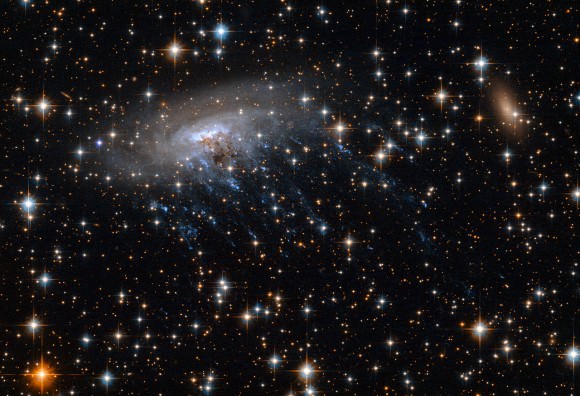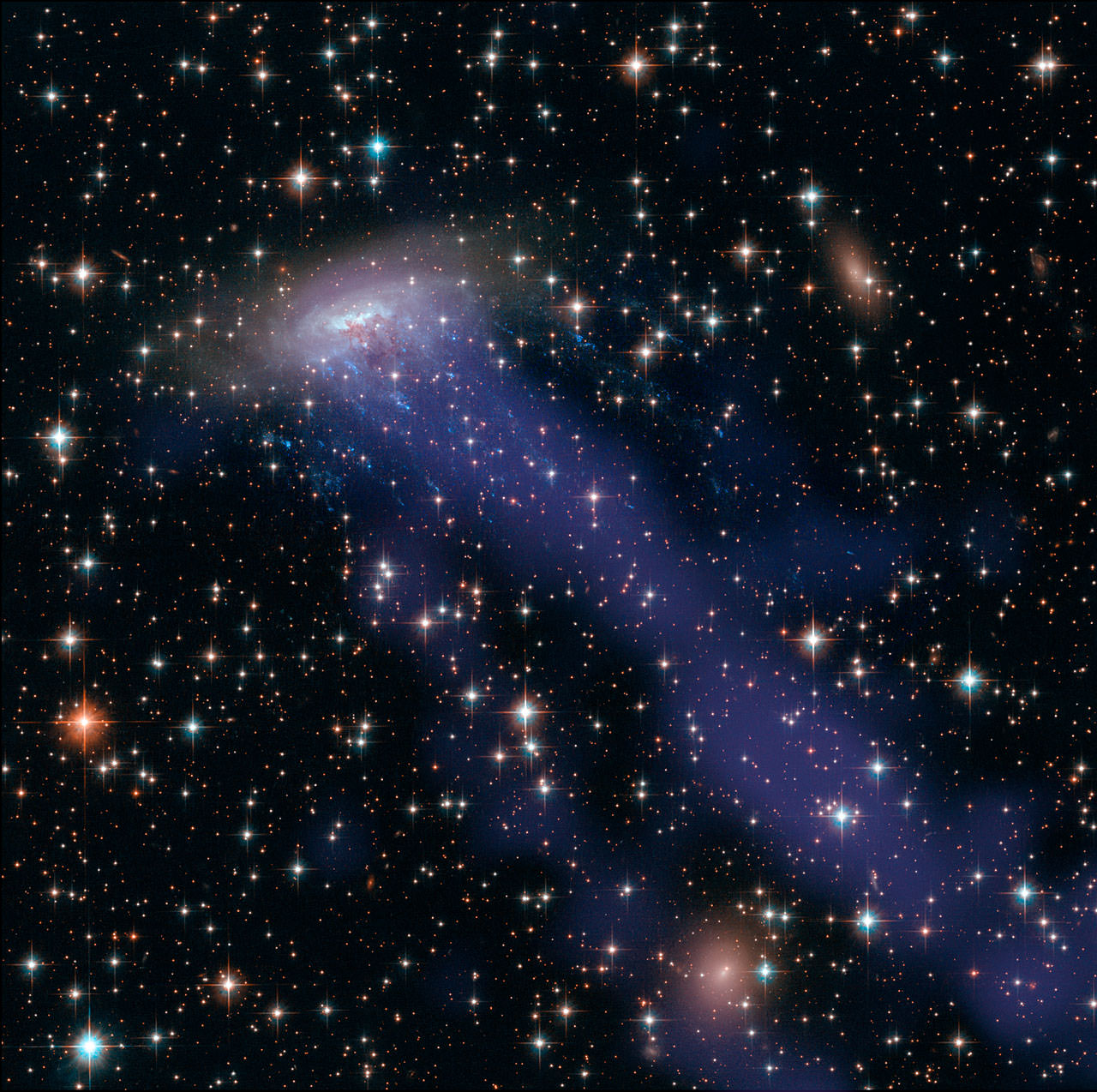Is that a tractor beam trying to latch on to galaxy ESO 137-001? While the bold blue stripe in the picture above looks like a Star Trek-like technology, this new picture combination captures a stream of gas shining brightly in X-rays.
The “galactic disrobing” is taking place as the galaxy moves through the center of a star cluster full of superheated gas, scientists said. You can see another shot of the chaos below the jump.
From Earth’s perspective, the galaxy (which looks a little like a jellyfish) is found in the Triangulum Australe (The Southern Triangle) , and is part of the Norma Cluster that is about 200 million light-years from the Milky Way (our own galaxy). ESO 137-001 is moving through a galaxy cluster called Abell 3627. All of the superheated gas in this region is making ESO 137-001 bleed gas from its own structure as it goes.
“These streaks are actually hot young stars, encased in wispy streams of gas that are being torn away from the galaxy by its surroundings as it moves through space,” stated the Hubble European Space Agency Information Centre. “This violent galactic disrobing is due to a process known as ram pressure stripping — a drag force felt by an object moving through a fluid. The fluid in question here is superheated gas, which lurks at the centres of galaxy clusters.”
“This image also shows other telltale signs of this process, such as the curved appearance of the disc of gas and dust — a result of the forces exerted by the heated gas,” the centre added. “The cluster’s drag may be strong enough to bend ESO 137-001, but in this cosmic tug-of-war the galaxy’s gravitational pull is strong enough to hold on to the majority of its dust — although some brown streaks of dust displaced by the stripping are visible.”
This stripping has been caught in other images, such as these 2007 and 2010 pictures from the Chandra X-Ray Observatory.
Source: Hubble European Space Agency Information Centre



Oh joy, more electric universe bibble-babble!
Electric universe mumbo-jumbo has been terminated!
This is not the only galaxy in this cluster with an x-ray tail. Nearby lies ESO 137-002, an edge-on galaxy that displays both an x-ray and H-alpha tail. In this image ESO 137-001 is at top, ESO 137-002 is below(x-ray emission is shown by red contours): http://iopscience.iop.org/0004-637X/708/2/946/downloadHRFigure/figure/apj333485f12
Hubble images of ESO 137-002 show some dark absorption nebulae on the left side of the galaxy in the direction of the x-ray tail (as well as a number of small nucleated dwarf galaxies surrounding ESO 137-002): http://www.spacetelescope.org/static/archives/images/screen/potw1302a.jpg
It really is remarkable to see two ram-pressure stripped galaxies in such close proximity to each other. A good description of these two galaxies can be found here: http://iopscience.iop.org/0004-637X/708/2/946/article
[BTW, thanks Ivan for taking out the trash. It’s a dirty job but somebody’s got to do it. 😉 ]
Best change “star cluster” to “galaxy cluster” in the second paragraph…